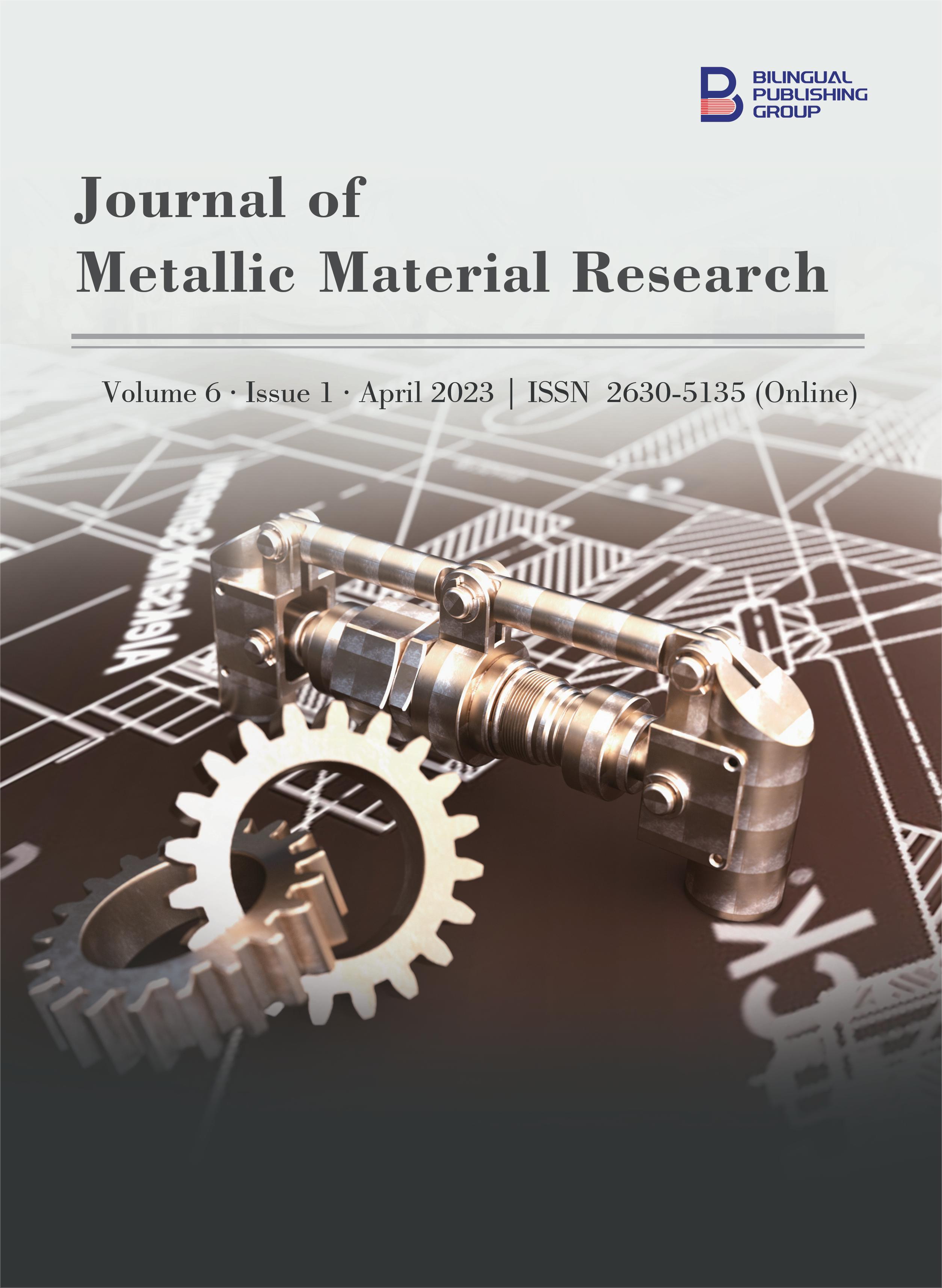-
184
-
170
-
134
-
116
-
90
Analyzing the Effects of Tool Holder Stiffness on Chatter Vibration Reduction in Turning
DOI:
https://doi.org/10.30564/jmmr.v6i1.5428Abstract
This paper investigates the effects of tool holder materials on chatter vibration in turning operations. The study uses a complex dynamic turning model with two degrees of freedom for the orthogonal cutting system. Tool holders made from different materials, including Al 5083, Al 6082, Al 7012, and a standard 4140 material, were subjected to chatter vibration to investigate their process damping capabilities. The study found that the standard tool holder 4140 allows for higher stable depths of cut and produces similar process damping values compared to the other tool holders. Finite element analyses (FEA) were performed to verify the experimental results, and the modal and FEA analyses produced very similar results. The study concludes that future research should investigate the effects of tool holders made from high alloy steel alloys on process damping. Overall, this paper provides important insights into the effects of tool holder materials on chatter vibration and process damping in turning operations, which can help in the design of more efficient and effective cutting systems.
Keywords:
Turning; Tool holder; Chatter; Process damping; Finite element analysisReferences
[1] Turkes, E., Orak, S., Neseli, S., et al., 2011. A new process damping model for chatter vibration. Measurement. 44, 1342-1348.
[2] Turkes, E., Orak, S., Neseli, S., et al., 2012. Decomposition of process damping ratios and verification of process damping model for chatter vibration. Measurement. 45, 1380-1386.
[3] Altintas, Y., Eynian, M., Onozuka, H., 2008. Identification of dynamic cutting force coefficients and chatter stability with process damping. CIRP Annals. 57, 371-374.
[4] Tlusty, J., Tlusty, G., 2000. Manufacturing processes and equipment. Upper Saddle River. Prentice Hall: USA. Available from: https://books.google.com.tr/books?id=xTBvQgAACAAJ.
[5] Turkes, E., Orak, S., Neseli, S., et al., 2011. Linear analysis of chatter vibration and stability for orthogonal cutting in turning. International Journal of Refractory Metals and Hard Materials. 29, 163-169.
[6] Gok, K., 2015. Development of three-dimensional finite element model to calculate the turning processing parameters in turning operations. Measurement. 75, 57-68.
[7] Gok, A., Gok, K., Bilgin, M.B., 2015. Three-dimensional finite element model of the drilling process used for fixation of Salter–Harris type-3 fractures by using a K-wire. Mechanical Sciences. 6, 147-154.
[8] Gok, K., Inal, S., 2015. Biomechanical comparison using finite element analysis of different screw configurations in the fixation of femoral neck fractures. Mechanical Sciences. 6, 173-179.
[9] Erdem, M., Gok, K., Gokce, B., et al., 2017. Numerical analysis of temperature, screwing moment and thrust force using finite element method in bone screwing process. Journal of Mechanics in Medicine and Biology. 17, 1750016.
[10] Gok, K., Inal, S., Gok, A., et al., 2017. Biomechanical effects of three different configurations in Salter Harris type 3 distal femoral epiphyseal fractures. Journal of the Brazilian Society of Mechanical Sciences and Engineering. 39, 1069-1077.
[11] Inal, S., Gok, K., Gok, A., et al., 2018. Should we really compress the fracture line in the treatment of Salter–Harris type 4 distal femoral fractures? A biomechanical study. Journal of the Brazilian Society of Mechanical Sciences and Engineering. 40, 528.
[12] Gok, K., Inal, S., Urtekin, L., et al., 2019. Biomechanical performance using finite element analysis of different screw materials in the parallel screw fixation of Salter–Harris Type 4 fractures. Journal of the Brazilian Society of Mechanical Sciences and Engineering. 41, 143.
[13] Pirhan, Y., Gok, K., Gok, A., 2020. Comparison of two different bowel anastomosis types using finite volume method. Computer Methods in Biomechanics and Biomedical Engineering. 23, 323-331.
[14] Türkes, E., Erdem, M., Gok, K., et al., 2020. Development of a new model for determine of cutting parameters in metal drilling processes. Journal of the Brazilian Society of Mechanical Sciences and Engineering. 42, 169.
[15] Ada, H.D., Erdem, M., Gok, K., 2021. Computational fluid dynamics simulation of erosion-corrosion in abrasive water jet machining. Surface Review and Letters. 28, 2150031.
[16] Gok, K., Selçuk, A.B., Gok, A., 2021. Computer-aided simulation using finite element analysis of protect against to coronavirus (COVID-19) of custom-made new mask design. Transactions of the Indian Institute of Metals. 74(5), 1029-1033.
[17] Gok, K., 2021. Investigation using finite element analysis of effect on crater geometry of different abrasive types in abrasive water jet machining. Surface Review and Letters. 28(7), 1-6.
Downloads
How to Cite
Issue
Article Type
License
Copyright © 2023 Authors

This is an open access article under the Creative Commons Attribution-NonCommercial 4.0 International (CC BY-NC 4.0) License.




 Kadir Gok
Kadir Gok






